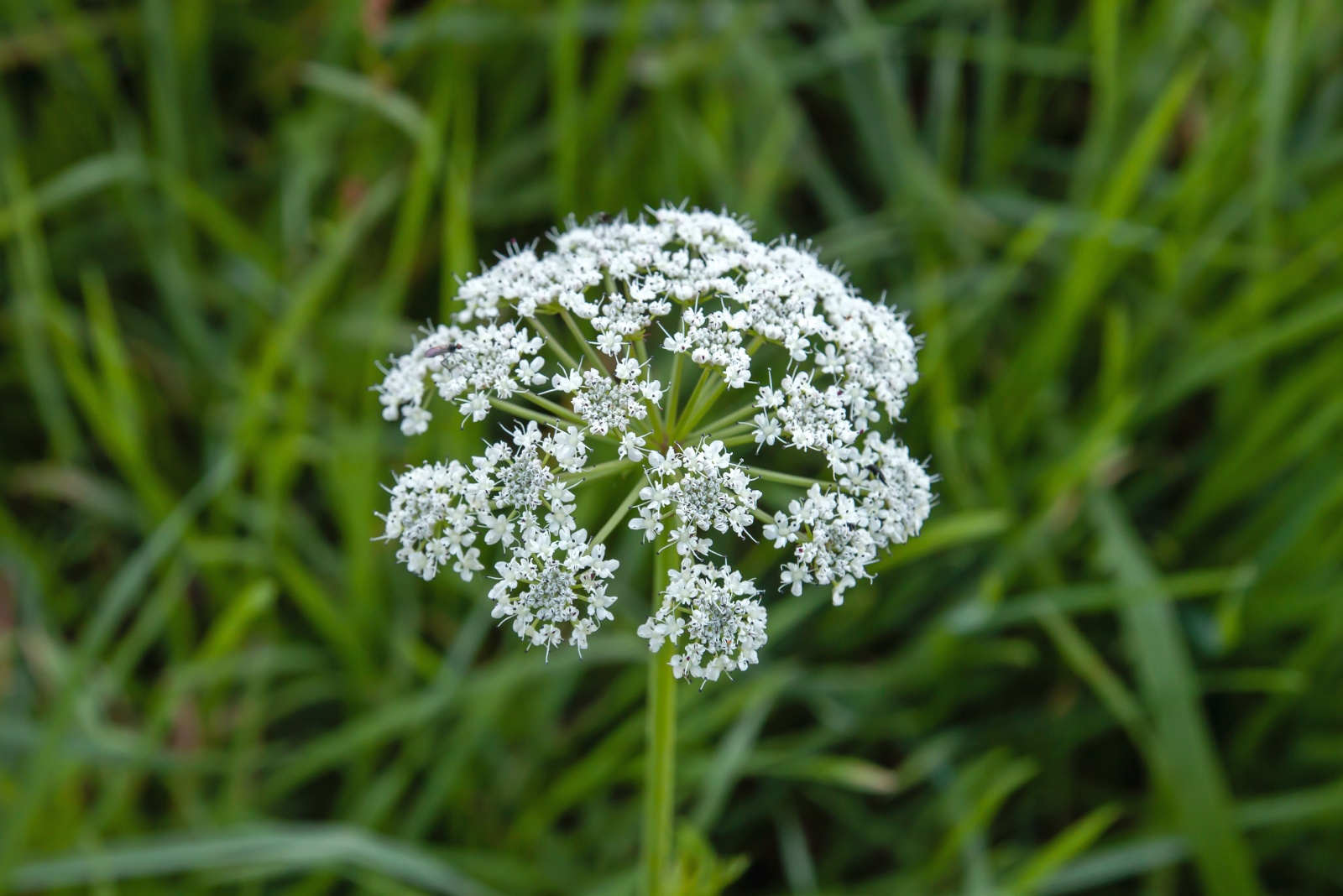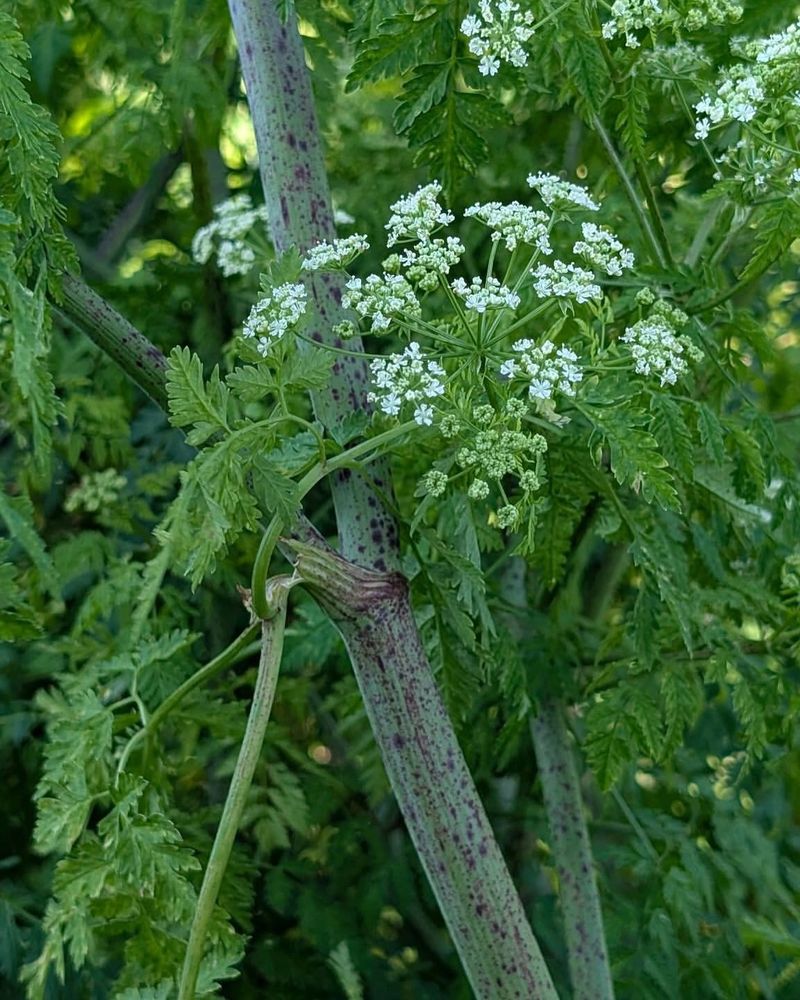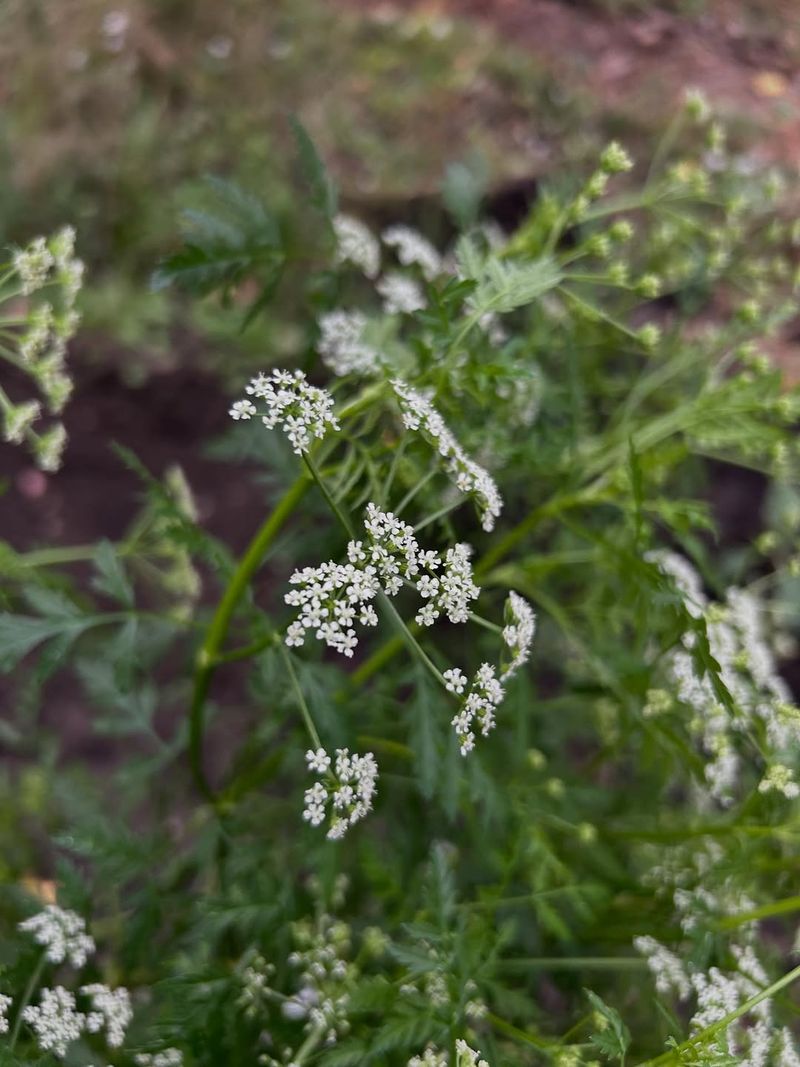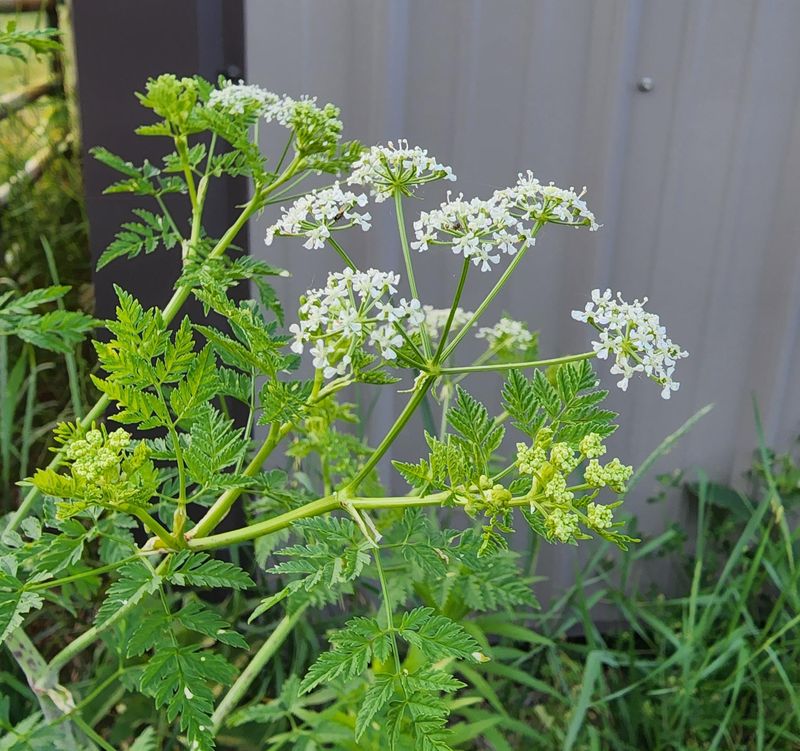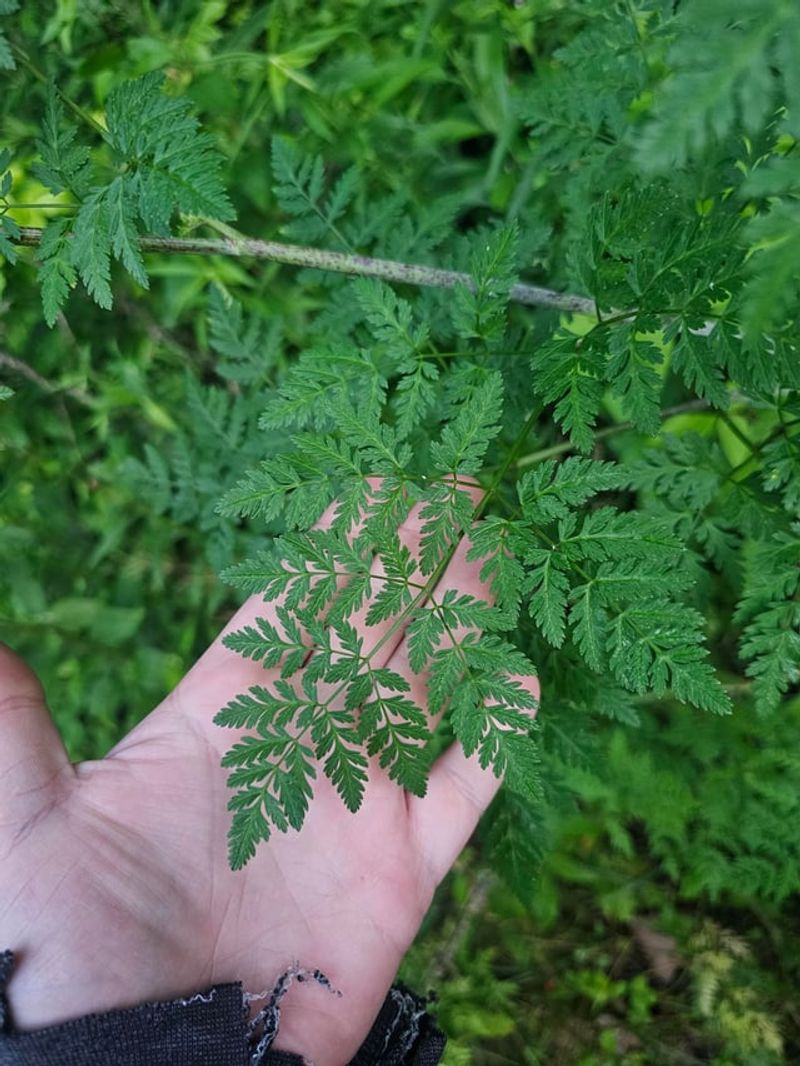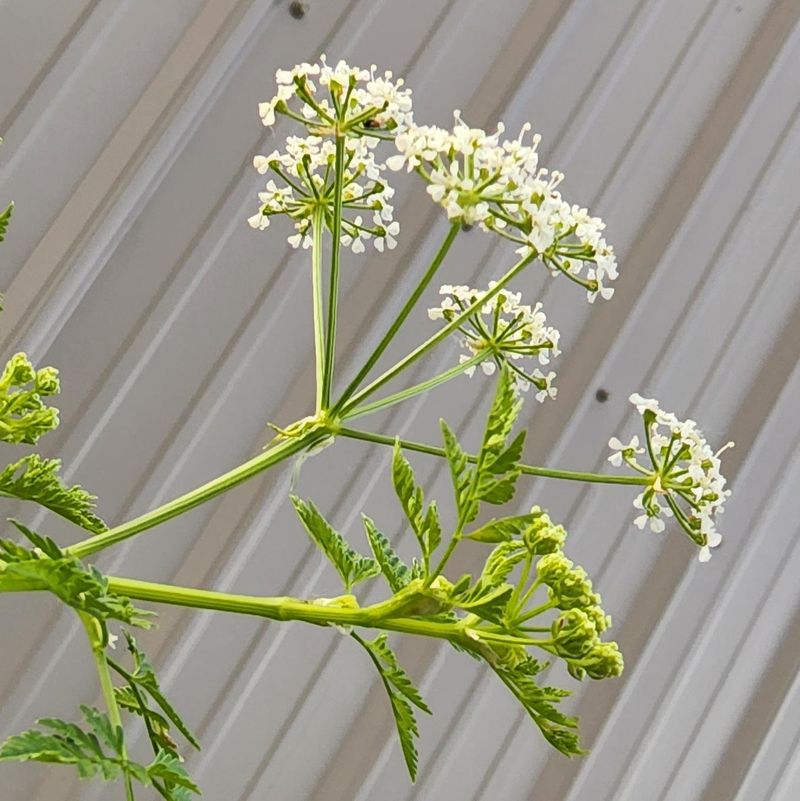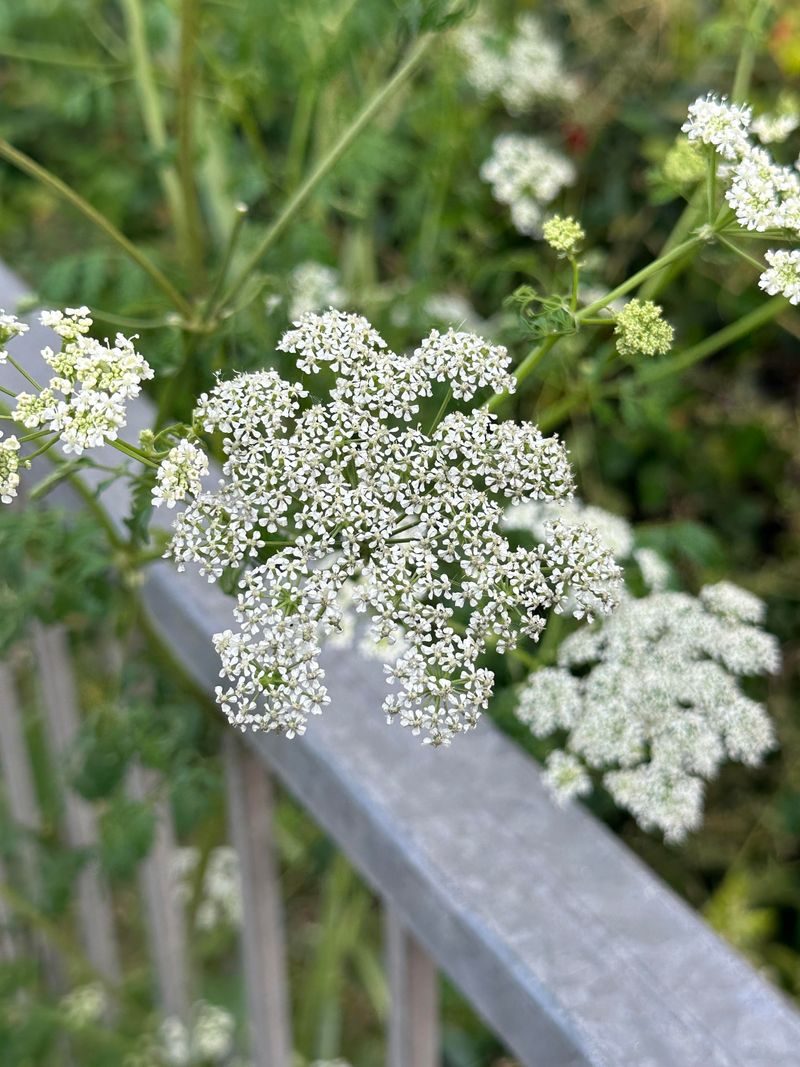This plant looks innocent at first glance, yet its touch packs a punch strong enough to send any yard owner on high alert. Conium maculatum or commonly known as Poison hemlock, hides behind delicate white blooms and fern-like leaves, luring the unwary into trouble.
One brush of the stem can turn a routine day in the garden into a risky gamble.
In Washington, wise homeowners spot its danger from a mile away and reach for gloves before taking a single step near it—because this notorious visitor plays by its own rules and never shows mercy to bare hands.
Touching It Can Poison You Through Your Skin
Your skin absorbs the toxic compounds in poison hemlock faster than you might imagine. Even brushing against the plant during yard work can transfer dangerous alkaloids directly into your bloodstream.
Gardeners who ignore this warning often experience burning sensations, rashes, and numbness within hours. The toxins attack your nervous system, causing muscle weakness and breathing problems that worsen quickly.
Always wear thick rubber or nitrile gloves when removing this plant from your property to avoid accidental poisoning.
Every Single Part Contains Toxins
From the roots buried underground to the delicate white flowers blooming above, poison hemlock packs lethal poison throughout its entire structure.
Many people mistakenly believe only certain parts pose danger, but that assumption could prove fatal.
The seeds contain especially concentrated amounts of coniine, the same toxin from which the ancient philosopher Socrates passed away. Stems, leaves, and roots all harbor enough poison to cause serious medical emergencies.
Never compost this plant or leave cuttings where children or pets might encounter them.
It Grows Aggressively Throughout Washington State
Washington’s mild, wet climate creates perfect conditions for poison hemlock to spread like wildfire across residential properties. A single plant produces thousands of seeds that remain viable in soil for up to three years, guaranteeing future infestations.
Roadsides, ditches, pastures, and neglected yard corners become colonized rapidly once this invasive species establishes itself. The plants reach heights of six to ten feet, crowding out native vegetation and creating dangerous situations for unsuspecting homeowners.
Early identification and careful removal prevent this aggressive weed from taking over your entire property.
Children And Pets Face Extreme Danger
Curious kids sometimes mistake poison hemlock stems for whistles or pretend flutes, putting the toxic plant directly in their mouths.
Pets exploring the yard might chew on leaves or roll in crushed plants, absorbing poisons through their skin and digestive systems. Small bodies process these toxins differently than adults, leading to faster and more severe reactions.
Symptoms in children and animals include drooling, tremors, seizures, and respiratory failure that requires immediate veterinary or medical attention. Inspect your property regularly and remove any poison hemlock before tragedies occur.
Proper Disposal Requires Special Precautions
Tossing poison hemlock in your regular yard waste bin creates risks for sanitation workers and anyone handling the bags. Even dried plant material retains dangerous levels of toxicity for months after removal.
Washington residents should seal the plants in heavy-duty plastic bags and contact their local waste management facility for guidance on hazardous plant disposal. Some counties offer special collection days for toxic vegetation, while others recommend taking it to designated drop-off locations.
Burning poison hemlock releases toxic fumes that cause respiratory problems, so never attempt this disposal method yourself.
It Resembles Harmless Garden Plants
Wild carrot, parsley, fennel, and other innocent plants share striking similarities with poison hemlock, leading to dangerous misidentification by amateur gardeners.
The purple splotches on poison hemlock stems provide the most reliable distinguishing feature, though not all specimens display obvious markings.
Its fern-like leaves and umbrella-shaped white flower clusters mimic edible wild plants that foragers seek. Crushing the leaves releases a musty, unpleasant odor often compared to mouse urine, unlike the pleasant scent of true carrots or herbs.
When in doubt, assume any unknown plant is dangerous.
Symptoms Appear Quickly And Progress Rapidly
Within just thirty minutes of exposure, victims often notice tingling sensations in their mouth and throat, followed by nausea and excessive salivation. These early warning signs escalate into muscle tremors, confusion, and loss of coordination as the toxins spread.
Without immediate medical intervention, the poison paralyzes respiratory muscles, making breathing impossible while the victim remains fully conscious.
No antidote exists for hemlock poisoning, so doctors focus on supporting breathing and flushing toxins from the body. Call poison control immediately if you suspect any contact with this dangerous plant.

